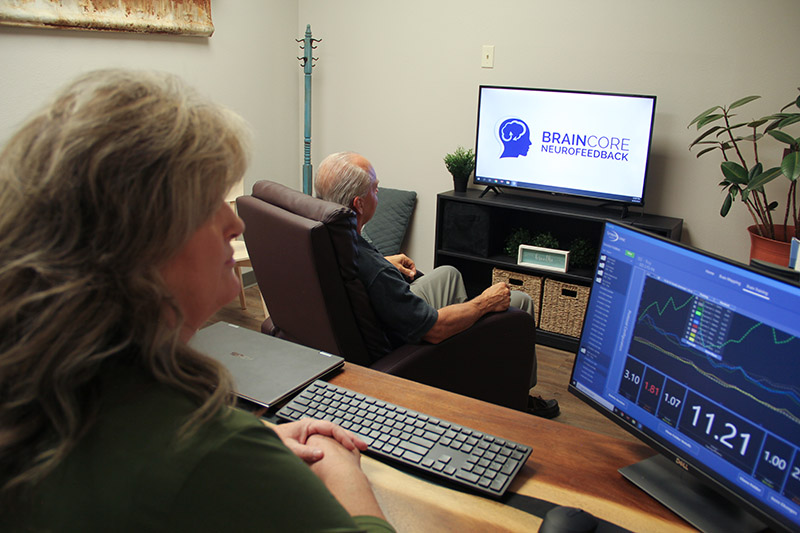What is Neurofeedback?
Neurofeedback is a state-of-the-art, non-invasive, drugless method for teaching the brain to function in a more balanced and efficient way. It does this through the use of computers, headphones and sensors which are placed on individuals in order to train and receive feedback from the four divisions of electrical impulses made by our brain: Delta, Theta, Alpha and Beta which are called “Frequency Bands”.
Everyday activity such as completing tasks at work, remembering to-dos, troubleshooting the problems of daily life, or paying attention in class, requires the use of a faster frequency called Beta waves. Conversely, a different, slower frequency called Delta will be needed to wind down and rest at the end of a long day.
A healthy brain easily switches between Delta, Theta, Alpha and Beta brain speeds during the normal course of the day. When a brain has abnormal patterns, or there is dysregulation between the two hemispheres of the brain, unwanted symptoms and behaviors can occur.
The goal of Neurofeedback is to improve the brain’s ability to self-regulate, maintain flexibility, and smoothly shift between states of relaxation and arousal. Most people seek out Neurofeedback for ADHD and Anxiety. However, science proves Neurofeedback is effective for a wide variety of brain-based conditions. Neurofeedback works well for trauma, PTSD, concussion, sensory processing disorders, tinnitus, pain, and learning challenges.
QEEG Brain Map Before Neurofeedback Training

Brain Map AFTER Neurofeedback Training


What happens during a Neurofeedback session?
Neurofeedback Therapy capitalizes on Neuroplasticity, the brain’s ability to heal itself through this learning process. The brain receives a reward in the form of auditory and visual feedback when it has proper brain signal use.
To train, the client is fitted with sensors that read and monitor the electrical impulses within the brain while watching one of their favorite TV shows. When brainwaves are optimal, the client has a real-time reward by seeing the show they are watching in full brightness and volume. When brainwaves are dysregulated, the picture and sound dim. The moment the brainwaves regulate again, the brightness and volume return. This process allows the brain to learn from itself and in turn how to better self-regulate. The brain learns to improve its performance by working for the rewards and avoid the negative feedback.
